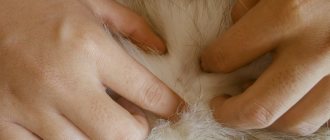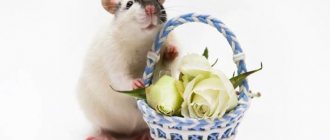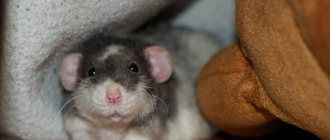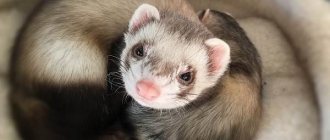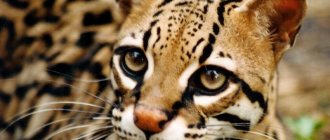Description, structure, lifestyle and natural habitat
Daphnia belongs to the genus of planktonic crustaceans and is a cladoceran organism. The second name, Water Flea, was given due to its structure reminiscent of these insects and the ability to make sharp leaps in the water column. If you look under a microscope, you can make the following description of the appearance:
- a rounded body 2-6 mm long is enclosed in a bivalve shell made of transparent chitin;
- there are branched antennae on the head that help jumps in the water;
- There is only one compound eye in mature individuals, but there is an additional ocellus near it;
- in the front of the head there is a beak-shaped growth called a rostum, and under it there are antennae with olfactory bristles;
- 4-6 pairs of thoracic legs are covered with many setae and contain gill sacs intended for breathing and absorption of food;
- in the posterior part of the body there is a tail equipped with paired claws and an anus to cleanse the body of large foreign particles;
- Eggs form in a sac-like outgrowth on the back.
Photo gallery of Daphnia:
The size and color of Daphnia depend on its subtype and habitat. Thus, in spacious, clean reservoirs with a sufficient amount of oxygen and nutrients, light gray or greenish individuals live, and in small and polluted ponds they acquire a red-brown pigment.
The internal structure has the following characteristics:
- the brain and the nerve chain in the peritoneum are responsible for the nervous system;
- striated muscles help move the antennae, tail and thoracic legs;
- the digestive system consists of the mouth, small and middle intestines, 2 hepatic outgrowths and the hindgut with the anus;
- closer to the back is the heart, from which 2 ostia filled with blood arise;
- the respiratory organ is not expressed, oxygen enters the body through the membrane and from the growths of the legs;
- on both sides of the intestine there is a pair of ovaries in females or testes in males.
Daphnia live in freshwater bodies of standing water. They are distributed everywhere, including the lakes of Antarctica. For successful reproduction, they only need a clean environment with a minimum amount of silt and dirt at the bottom. Otherwise, there is a risk of accumulation of clogging substances in the intestines of crayfish, which leads to their death.
In the water column they exist as plankton, freely drifting with the current. They hide at the bottom when the sun shines too brightly, and the rest of the time they swim at the top. Life expectancy in a favorable environment is 22 days, and in a large individual it reaches 110-150 days.
Appearance
Sex differences
Under favorable conditions, daphnia do not have males. Females give birth to their own kind. When conditions change, some females give birth to males.
Female and male individuals have some differences in external and internal structure:
- females are larger in size;
- on the head shield and outer cover of females there is a pattern of rhombuses and polygons, which is clearly visible when magnified;
- The first and second pairs of legs in males have hook-shaped projections that allow them to cling to females during mating.
Subspecies
About 150 species of these crustaceans live in natural conditions . Very often, several dozen species of crustaceans live in one body of water.
Daphnia magna
This variety is used as live food for aquarium fish due to its high nutritional value. The body length of the female is 3-5 mm, the male – no more than 2 mm. Newborns are microscopic in size. The main color of the outer cover is yellow or pinkish-orange. This species easily tolerates low temperatures. It is quite rare in nature, but in permanent habitats it is found in abundance. The lifespan of adult specimens is 3 months.
Daphnia pulex
The length of an adult female does not exceed 4 mm, a male – 1.5 mm. The color of the outer covers varies from light yellow to red. Externally, the crustaceans resemble Daphnia magna. The difference lies in their smaller size and life expectancy, which does not exceed one and a half months. The variety is characterized by incredible fertility. Females lay eggs every five days. Each clutch consists of 15 eggs.
Mr. Tail recommends: Daphnia as fish food
Many aquarists and entrepreneurs prefer to grow Water Fleas as food crops for feeding small and young fish. You can also buy crustaceans in any form from them:
- live for home breeding;
- ice cream packaged in blisters;
- dry as ready-to-eat food.
This food has a number of positive aspects and has a positive effect on aquarium flora and fauna.
Where to get daphnia for breeding
Purchasing daphnia for breeding is not difficult, but each method has its own risks. There are the following methods for obtaining crustaceans:
- Purchase in specialized stores. This is one of the safest ways to obtain healthy cladocerans, in which the risk of obtaining diseased daphnia or various bacteria is minimized. Moreover, there you can buy everything you need to maintain them and get advice.
- Order online. There is a risk of getting dead daphnia or not getting any at all, so choose your store carefully.
- Buy from an experienced aquarist. If you come across an honest and truly experienced person, then the losses may be minimal, as in the first case.
- Self-catching. In the summer, daphnia are found in large quantities in almost all reservoirs. However, there is a risk of catching various bacteria along with crustaceans, which can harm not only the crustaceans, but also your fish in the future.
If you want to start breeding daphnia, it is better to purchase them from trusted sources; this can not only reduce costs, but also create a favorable environment in the aquariums.
Value and Benefits
Daphnia is grown along with Bloodworm, Gammarus, Caddisfly, Amphipod, Cyclops, Prudovik and other food organisms. In terms of calorie content, they are all approximately equal, but the first has a higher protein content. Amino acids absorbed by young fish have a beneficial effect on their growth and development. Because of this, Daphnia is used commercially and added to many dry foods. In this form, 50% of their mass consists of proteins.
Live food is of particular importance in the diet of fish. It minimizes their incidence, is easier to digest during illness and facilitates adaptation to new conditions.
Crustaceans usually have a stomach filled with plant particles, so they are preferred as food by Guppies, Danios, Fire Barbs, Crucians, Carps and other aquatic inhabitants. In an aquarium, such nutrition is especially useful for fish deprived of a natural diet. The chitin shell, which is not digested, activates the intestines and starts its cleansing.
Moreover, they are unpretentious in care and multiply quite quickly. They benefit the entire aquarium by filtering the water in it. One individual eats 6 times more food per day than it weighs. This helps get rid of foreign microorganisms in a pond or tank.
Breeding at home
Breeding crustaceans is not difficult. To do this, it is enough to create suitable conditions.
Containers for growing
To grow crustaceans at home, you can use containers with a volume of up to 20 liters, made of glass, propylene or stainless steel. If they are raised in a regular aquarium, the surface area must be large to allow for gas exchange.
Environment Settings
Daphnia can be grown in almost any conditions.
Crawfish feel most comfortable in water with the following parameters:
- Temperature. The water flea thrives in a body of water with a wide temperature range. The optimal water temperature is 18-24 degrees.
- Salinity. Daphnia is a freshwater crustacean, so the water in the container must be fresh.
- Oxygen. Under natural conditions, daphnia can live in ponds with dirty water, so oxygen levels can fluctuate from zero to very saturated. This endurance of organisms is associated with their ability to produce hemoglobin. Crayfish do not tolerate intense aeration with a large number of small bubbles. When the container is slowly saturated with oxygen, a layer of foam forms on the surface, which can be destructive.
- Ammonia. Even a small amount of ammonia has a negative effect on the body of daphnia and can affect the intensity of their reproduction.
- Minerals. Crawfish react sharply to changes in the chemical composition of water. A slight increase in the amount of zinc, magnesium or potassium in the aquatic environment can be detrimental to them. Thus, a slight increase in the amount of copper reduces the activity of daphnia, and phosphorus can cause the death of young individuals.
Aeration
Additional enrichment of water with oxygen is desirable when growing certain species. Aeration promotes the development of phytoplankton and prevents the formation of a film on the surface of the water. The air flow should be of medium intensity so as not to cause inconvenience.
What to feed
Under natural conditions, daphnia feeds on microplankton, bacteria and yeast.
To obtain bacteria, soak banana peels in warm water and leave for 6-7 days. When the water becomes cloudy, the nutrient medium can be added to the aquarium at the rate of 0.5 liters per 20 liters of water.
For feeding, you can use dry or wet baker's yeast, which is rich in nutrients. Feed is added at the rate of 28 grams per 20 liters of water daily.
Chlorella is used as microscopic algae, which inhabits almost all bodies of water. To breed such algae, it is enough to place a small amount of water from the aquarium in a warm, well-lit place. In such conditions, algae begin to actively reproduce.
To diversify the diet of crustaceans, it is recommended to add a small amount of beet, cabbage or carrot juice to the water, which will serve as an additional source of vitamins.
How to increase cultivation productivity
Growing daphnia at home is not difficult even for beginners.
To increase productivity, you should use the following recommendations:
- to aerate the container when breeding crustaceans, you should use an airlift filter used in cages with fry;
- water changes are carried out taking into account the feed used and the volume of the container; if the aquarium is large, then replace up to 30% of the water once every 7-10 days;
- regularly collect daphnia; this will help maintain constant reproduction and growth of crustaceans;
- the duration of daylight should be at least 18 hours; 24-hour lighting is ideal.
Species of Daphnia
Their genus includes more than one hundred species of cladocerans, which belong to approximately 10 families. In Russia you can find three varieties:
- Magna is considered the largest, reaching a length of 6 mm in the female, 2 mm in the male and 0.7 in the larva. It matures in 12-14 days and gives birth in 2 weeks, laying an average of 20-30 and up to 80 eggs (ephippia) at a time. Lives approximately 110-150 days.
- Pulex is medium in size, the female grows up to 3-4 mm, and the male no more than 1-2 mm. It reproduces every 3-5 days, producing 10-25 eggs. The life cycle is 26-47 days.
- Moina is the smallest, has a soft shell and is suitable for feeding fry. It grows no more than 1.5 mm, and newborns are 0.5 mm. Maturation occurs within a day, and litters appear every 1-2 days, up to 53 ephippia each. Lives for approximately 22 days.
These three types can be bred even by amateurs, without requiring special maintenance. But the specifics of caring for them and interacting with other inhabitants are still worth knowing.
Origin of the species and description
Photo: Daphnia
The genus Daphnia was described in 1785 by O.F. Muller. There are about 50 species of Daphnia, and many of them have significant differences from others. Daphnia longispina, described by the same Müller, is used as the type species.
Daphnia is divided into two large subgenera - Daphnia proper and Ctenodaphnia. The latter differ in a number of characteristics, for example, the presence of a notch in the head shield, and in general have a more primitive structure. But this does not mean that they occurred earlier: fossils date the origin of both to approximately the same time.
Video: Daphnia
The first representatives of branchiopods appeared about 550 million years ago, among them were the ancestors of daphnia. But they themselves arose much later: the oldest fossil remains date back to the Lower Jurassic period - that is, they are approximately 180-200 million years old.
These are not as ancient times as one might expect from relatively simple organisms - for example, fish and birds appeared much earlier. But, like other representatives of the superorder Cladocera, even in those days daphnia were similar to those of today, and in this they differ from more highly organized organisms of the same antiquity.
At the same time, one should not think that daphnia do not evolve: on the contrary, they have high evolutionary variability and adaptability, and constantly give rise to new species. The final formation of the Daphnia genus occurred immediately after the extinction at the end of the Cretaceous period.
Daphnia in the aquarium
To breed crustaceans in closed tanks, you must provide certain conditions for their existence:
- choose a clean container made of glass or plexiglass, initially with a capacity of 1-3 liters, replacing it as the number of inhabitants increases, taking into account a density of 0.3-1 kg/m³;
- use purified water or from the tap, with a hardness of 6-18° and a neutral pH of 7.2-8, without chlorine and chemical impurities, for which it can be filtered;
- place it away from direct sunlight, as crustaceans do not like excessive light;
- install a 20 W fluorescent lamp, providing light lighting for 14-16 hours every day;
- provide temperatures within +20…+24 °C for Daphnia vulgaris and +26…+28 °C for Moin; in a cool habitat the reproduction rate will decrease;
- provide complete nutrition by dissolving the fertilizer in the liquid until it becomes slightly cloudy, and adding a new portion after clearing;
- as necessary, clean and change the water so that debris and silt do not accumulate at the bottom, as well as plaque on the walls;
- use weak aeration to remove film on the surface, mix food, provide oxygen access of at least 3-8 mg/l and oxidation 14.8-26.2 mg O2/l.
First, you should purchase crustacean eggs and place them in a prepared container. Already matured individuals need to be caught with a net in order to immediately be fed, dried or frozen.
Natural enemies of daphnia
Photo: Daphnia eggs
Such small and defenseless creatures have many enemies - predators that feed on them.
This:
- small fish;
- fry;
- snails;
- frogs;
- larvae of newts and other amphibians;
- other predatory inhabitants of water bodies.
Large and even medium-sized fish are practically not interested in daphnia - for them it is too small prey, which requires too much to saturate. But small things are another matter; for small fish, if there are a lot of daphnia in the reservoir, they serve as one of the main sources of food.
This is especially true for large species, because for small daphnia their very size serves as protection - even a small fish will not chase a crustacean half a millimeter in size, but large specimens 3-5 mm in size are another matter. It is fish that are the main predator that destroys daphnia, and larger fish fry also feed on them. Daphnia is also one of the main sources of food for them.
But even if there are no fish in the reservoir, they are still threatened by many dangers: large individuals are eaten by frogs and other amphibians, and their larvae eat small ones too. Snails and other predatory mollusks feed on daphnia - although daphnia may try to “jump” from some of them, unlike much more agile fish.
Interesting fact: Decoding the Daphnia genome has revealed a lot of interesting things to scientists: approximately 35% of the gene products found in the genome are unique, and are very sensitive to any change in the environment. It is due to this that daphnia adapt so quickly.
Nutrition of Daphnia
In nature, Water Fleas feed on simple microorganisms:
- blue-green algae from unicellular organisms;
- ciliates;
- fungal spores;
- bacteria;
- detritus (remains of invertebrate animals).
A suitable environment is created in ponds with a small number of fish and a large number of phytoplankton, which creates the effect of a bloom in the water column. In artificial tanks, crustaceans should be fed with the following products:
- The bacteria are obtained from banana peels, food waste or excrement. To do this, they should be soaked in water for up to a week until it begins to become cloudy. Add the resulting liquid to the tank, 450 ml per 20 liters, every 5-6 days.
- Microscopic algae and other plankton will remove excess contaminants and serve as food for Water Fleas. To obtain them, you should scoop up the liquid from the stocked aquarium and place it in a sunny, warm place at +18...+25 °C.
- Yeast can be dried or raw, frozen to a rich color. Dilute in water at +35 °C at the rate of 1-3 g per 1 liter. They should be used 2-3 times a week, in combination, as they have less nutritional value.
- Beetroot, cabbage or carrot juice will serve as a vitamin supplement. You need to add 1 tsp to the container. for 5 liters of volume.
- Dry the elodea, nettle or lettuce, chop it, grind it in gauze, and add it to a container of water. When it turns green, introduce crustaceans there. Repeat every 10-15 days.
- A couple of times a week you can add ammonium nitrate at 1 g/100 l, phosphorus salts up to 5 mg/l, or other mineral fertilizers.
- Stale blood or water remaining from washing fresh meat (1.5-2 cm3/l), blood or meat and bone meal (0.5-2.5 cm3 per 10 l), manure (1.5 kg/m3).
During the feeding process, crustaceans create a current by raking with their chest paws. It is on them that the organs that send microelements to the esophagus are located. Inside there are organs that produce a sticky substance that collects individual food particles into clumps. Inside the esophagus, they go through all stages of digestion and only large excesses come out.
How to breed
For breeding daphnia, a 15-liter plastic container is best suited, or you can breed daphnia in an aquarium. Before choosing a container, consider the following:
- The material from which the vessel is made must not dissolve in water or release harmful chemicals (for example, polypropylene).
- stainless steel containers
- The container must have a large surface contact area with air for normal gas exchange.
- If the container will be located outdoors or in a room with bright lighting, its volume must be at least 40 liters for the stability of the aquatic environment.
Little Daphnia
Interesting! If you need a small amount of daphnia, you can grow them in a two-liter bottle.
Blue-green algae, yeast and bacteria can be used as a nutrient medium. If the container is exposed to direct sunlight, then the algae in it will develop very quickly and this “blooming water” is used to feed daphnia.
Regular baker's yeast can be used at a rate of up to 28 g per 20 liters. The chemical composition of yeast has great nutritional value for daphnia.
The optimal temperature for keeping crustaceans is 18-22°C, although some varieties can withstand fluctuations of 5-31°C. Daphnia can also live and develop normally not only in dirty water, but also tolerate both the almost complete absence of oxygen and its oversaturation.
When breeding daphnia, timely and regular selection of the culture is important, as this preserves the ability to quickly accumulate oxygen and food. Catching begins on days 10-12, using a net with large cells to allow young crustaceans to pass through. It is best to catch during the day, when all the crustaceans rise up.
The nutritional value of captured crustaceans gradually decreases, since they do not receive the required amount of food, so it is best to freeze them.
Catching Daphnia
Water fleas can be collected independently from small lakes, ponds with waterfowl, pits, ditches and other bodies of water with minimal aquatic life. They do not breed in river conditions, but only in standing water. They are quite easy to detect by coloring the thickness in a gray-green or brownish tint.
You should not look for them in heavily dammed reservoirs or lakes with many fish and predators. The presence of the latter will affect not only the quantity of plankton, but also its quality, and will also increase the risk of the spread of diseases to aquarium fish.
To catch bioplankton, you need to take a fine-mesh net or muslin sieve. The scooping motion should follow a figure eight shape and be slow. Rapid scooping leads to increased pressure on the crustaceans and to their death.
The best time for this is during the period of water bloom, when the concentration of algae in it increases. Moreover, it is easier to do this in a shaded area of shallow water, in the evening or on a cloudy day. After all, the attitude of crustaceans to bright sunlight is negative; under them, plankton-like creatures tend to go deeper closer to the bottom.
Habitat
Daphnia are usually found in all standing bodies of water, from a pond to a deep lake. These crustaceans are even found in Antarctica. The main condition for the habitat of daphnia is standing freshwater with a minimum amount of soil particles.
When daphnia enter groundwater, they filter the soil and gradually accumulate algae in their intestines, clogging it. These crustaceans do not like polluted water bodies, so they can be used to judge the cleanliness of a river, lake or pond.
They live for about 22 days
In reservoirs where daphnia live, most of their life passes in the water column. Some species can live at the bottom, eating dead parts of plant food and the remains of invertebrate animals. They can also be found in other places - puddles, holes with water. Crustaceans react very sensitively to lighting, and when it is too bright, they go deeper. Large daphnia lives for 110−150 days. The life cycle of other species is much shorter and can be up to 22 days.
Natural reproduction and breeding of Daphnia
Water fleas are not asexual creatures, as evidenced by the presence of ovaries in females and testes in males. They also differ in the size and structure of the antennae. But in them, like all cladocerans, reproduction occurs through cyclic parthenogenesis. Same-sex reproduction is especially important when only female individuals remain in the population. Moreover, in warm summer weather, young females develop from their unfertilized eggs. In autumn and when water bodies dry up, males emerge from such ephippia. Their embryos are born under the shell and wait several molts before emerging.
When fertilization is complete, smaller and faster males mate with females, attaching themselves to the rear edge of the shell. During parthenogenesis, all litters are the same sex. After colder weather and decreased daylight hours, bisexual reproduction occurs. In this case, some individuals give birth to males, while others lay ephippia, which are dormant until fertilization. They spread with the wind, on the legs or feathers of birds, the fur of mammals, and in the intestines of fish. In winter, they are found on the water surface or in the upper layers of silt. They are resistant to frost or drying out, and when placed in a favorable environment, embryo development begins.
For cultivation, dry eggs are taken and placed in a suitable environment. They grow and multiply quickly, which makes it possible to obtain 30-50 g of crustaceans from 1 m3 of ephippia. Feeding has two directions:
- Joint, in which food is brought into the tank with Daphnia. The negative is rapid contamination and the need for frequent fluid replacement.
- Separate is convenient for mass breeding. At the same time, algae is grown in a separate container, which is introduced into the tank 1-2 times a day during feeding.
Industrial cultivation of forage crustaceans in large pools and dams is now popular. In this case, the producer changes the water and replants the crop every few weeks or months to prevent it from aging.
Reproduction of individuals
Daphnia are distinguished by the peculiarity of breeding offspring without fertilization. Females of this species have a brood chamber. It is protected by the edge of the shell and is located on the back. Under favorable conditions, an adult can lay 50 to 100 unfertilized eggs. They develop in the cavity, and only females, and leave it independently. In females, molting begins after this.
After a few days, the reproduction process begins to repeat. Adult individuals join this cycle, so everything happens very quickly. One female can give birth to offspring up to 25 times over the entire period of her life. Because of this, in the summer you can observe a reddish color of water in reservoirs where daphnia live. It is simply teeming with a huge amount of plankton.
With the onset of autumn, males join the breeding process. After fertilization, the shell on the eggs becomes denser. Future offspring are able to withstand frosts, as well as drying out water bodies, and spread with dust. When spring arrives, the breeding cycle begins to repeat again as females emerge. A new population of individuals may differ in body shape at different times of the year.
https://youtube.com/watch?v=rcNedJCHAh8
Danger to humans
Because of their association with insects, many people believe that Water Fleas bite. But they do not have the corresponding organs, which means that such bites are excluded. Daphnia can cause harm only by causing an allergic reaction in people predisposed to it. As they absorb food, they also accumulate dangerous pollen, the concentration of which increases in dried organisms.
According to statistics, crustaceans cause allergies in almost every fourth person. It manifests itself in the following symptoms:
- itchy skin rashes, like hives;
- dryness and congestion of the nasal sinuses, runny nose;
- frequent involuntary sneezing;
- allergic conjunctivitis with tearing;
- difficulty breathing due to bronchospasm;
- bronchial asthma.
To diagnose the condition, doctors analyze a skin test. In case of positive results, antihistamines are prescribed and contact with Daphnia is avoided.
Benefits and harms for the aquarium
These are useful creatures that filter water and regulate the microflora of the aquarium. They serve as live food for many inhabitants of the home pond.
The water flea is not capable of biting a person or harming aquarium fish, since crustaceans do not have a piercing-sucking oral cavity. Allegations regarding bites are fictional.
The main harm of copepods is associated with their high allergenicity. An allergic reaction is caused by the dusty suspension obtained when they are dried for use as dry food.
When dust particles enter a person, an allergic reaction may begin, accompanied by a dry cough, redness of the eyes, excessive lacrimation, runny nose, and exacerbation of bronchial asthma. After some time, a skin rash, itching, and burning appears.
To treat allergies, you should immediately seek medical help or take an antihistamine.
Value as fish food
The water flea is very often used as food for aquarium inhabitants. Crayfish contain up to 70% protein. It is given to fish in dry, fresh or frozen form. Crustaceans are caught in reservoirs or bred at home.
How to feed
Daphnia can be fed in two ways. The first is based on water transparency. The second is based on the density of the crustacean culture in the aquarium.
Method one: Add the food mixture to the container with crustaceans and mix gently until the water becomes slightly cloudy. You should remember the amount of feed supplied. After a day, the water should become crystal clear. If this does not happen, then there was too much food. If the water clears faster, it means there is not enough food. This method requires experience and constant correlation of the amount of mixture supplied. Suitable for mature colonies only.
Method two First, you will need to learn how to determine the number of daphnia per unit volume. In this case, one unit is 20 ml. Buy a regular 20 ml syringe at the pharmacy and leave only the flask. Attach it to a stick, for example, a bamboo sushi/roll stick, vertically with the tip down and seal it. You will get something like a scoop. With this scoop you need to scoop up water from different depths and count each time how many daphnia are caught in it. Then it remains to calculate the average value. Feed should be supplied based on the number of daphnia per unit volume - the same 20 ml. Use the table below as a guide to create your own. For example, if the average value is about 20 crustaceans per 20 ml in a 100-liter aquarium, then every day you need to stir 2 teaspoons (tsp) of the food mixture (without a slide). Be sure to observe the transparency of the water as mentioned in the first method. The proportions may need to be changed.
Table of the amount of feed supplied depending on the density of the Daphnia culture
| Daphnia density per 20 ml | Amount of feed per 100 liters | Amount of feed per 200 liters |
| 20+ | 2+ tsp/day | 4+ tsp/day |
| 12-20 | 2 tsp/day | 4 tsp/day |
| 5-11 | 3/4 tsp/day | 1-1/2 tsp/day |
| 1-4 | 1/4 tsp/day | 1/2 tsp/day |
| 0-1 | 1/8 tsp/day | 1/4 tsp/day |
In the first stages of growing daphnia, when their number is very small (they have just been brought in for breeding), it is easy to overfeed the crustaceans. Uneaten food quickly decomposes and pollutes the water, which can ultimately lead to the death of the entire colony. Therefore, food should be fed in limited quantities, a few pinches at a time.
Collection of Daphnia
When it comes to cultivating daphnia, collecting them can be a real challenge, but it is an integral part of the entire breeding process. Otherwise, overpopulation becomes a serious problem. Even if you have to shake the crustaceans into the sink, this must be done because the culture can become unstable. If the aquarist cultivates daphnia at temperatures below 25 0C, it makes sense to start catching in the middle of the second week. This is because most crops take several days to adapt and begin reproducing. When culling/catching, a mesh is used that has cells large enough to allow young crustaceans to pass through, but small enough to catch adults (some aquarists recommend pouring ¼ of the container through the mesh and then filling the volume with a new portion of water with a nutrient medium). No more than ¼ of the population can be caught daily, which also depends on the quality of cultivation. Catching can be done during the day when aeration stops, when all daphnia rise to the top layer of water.
Caught crustaceans can live for several days in a fish tank with fresh water. They show normal activity when the temperature rises. However, the nutritional value of daphnia gradually decreases because they are starving and must be provided with food for the best effect. Crayfish can be stored frozen for a long time if they are frozen in water with a low salt content (0.007 ‰, density - 1.0046). Of course, this will kill the daphnia, due to the leaching of nutrients their value will decrease, almost all enzymatic activity will be lost within 10 minutes, and after an hour ½ of the free amino acids and all bound ones will be lost. Fish are not so willing to eat frozen crustaceans.
When, in what quantities and with what to collect daphnia
The “harvest” can only be harvested when the concentration of crustaceans reaches 10–15 or more per 20 ml. At the same time, only large individuals should be caught so that small and medium-sized ones continue to grow and produce a new generation. As soon as the concentration reaches 10 or less crustaceans per 20 ml, fishing stops. Collection can be done the old fashioned way with a net, with a cell size sufficient to catch large individuals, or you can use new inventions - special traps for daphnia. More details in the video below.
Here is a simple algorithm to remember: feed, feed, change water, harvest…. and again, feed, feed, change water, harvest….
Related species
Many species of Daphnia/Cladoceran can be found throughout the world. Some of them are presented below. It is worth noting that their capture will depend on the geographical location of the capture site.
D.hyalina
most often found in open waters of lakes. Compared to D. magna, D. hyalina is almost transparent, making it difficult to notice. Individuals of this species reach a length of 3 mm, the body is slightly rounded, and the head is less rounded and prominent compared to Daphnia magna.
Bosmina coregoni
represented by medium-sized individuals (about 1 mm in length), inhabiting grassy lakes and canals. Due to its small size, Bosmina is an attractive food for fry. This is a very active species that, without examination under a microscope or magnifying glass, can easily be confused with other small daphniids. Her body shape is like a pea that has begun to sprout. This species is usually found in Northern Europe. Interestingly, many of the "Moina" cultures are actually Bosmina cultures.
Simocephalus vetulus
a large daphniid that tends to colonize the upper film of water. Compared to other daphniids, Simocephalus vetulus is more tolerant of acidic environments and often reaches 6 mm in length. Distributed in Northern Europe.
Contents of Daphnia
A tank with daphnia is equipped with an aerator to enrich it with oxygen and mix the food throughout the entire volume.
Using a biological or any other filter is not effective; it will quickly suck in the food before the daphnia get to it. The result is malnutrition of the crustaceans and rapid clogging of the filter material. The only equipment that is used when growing daphnia is an aerator. You may also need a heater if the temperature does not reach 18 degrees. Aeration solves several problems: it enriches the water with oxygen and mixes it, ensuring uniform distribution of feed throughout the entire volume. The latter is very important for the normal nutrition of crustaceans, since food particles should not settle to the bottom, but should be constantly suspended.
If done correctly, within a few weeks the colony should reach a concentration of more than 10 daphnia per 20 ml, which means 100-150 grams (wet weight) per 100 liters per week. A smaller number will indicate a problem. In this case, carefully inspect the aquarium/tank for natural predators such as flatworms, hydras and others. Problems may be related to the conditions of detention; there are two main signs: crustaceans do not reproduce well or there is a high mortality rate. In the first case, it is probably a matter of temperature. But in the second, everything is much more complicated. You will need to check every component: the quality of the water (usually for the presence of chlorine), the composition of the feed and its distribution throughout the entire volume of water, how cleaning occurs, perhaps too much loss is due to the siphon, etc.
Reproduction in nature
During the summer months, daphnia are often found in blooming ponds and lakes that have high concentrations of algae. The fertility of daphnia is simply amazing, which is associated with the implementation of parthenogenesis.
Parthenogenesis is the ability of self-reproduction without the need for fertilization, when the offspring completely repeats the genotype of the parent, and any differences in the physiological state are determined by environmental conditions. Parthenogenesis allows daphnia to reproduce rapidly under favorable conditions, shortly after they emerge from the eggs. In nature, in late spring, summer and early autumn, depending on temperature, food availability and the presence of products of their metabolism, Daphnia reproduces parthenogenetically, giving birth to an average of 10 nauplii for each adult. During this period, only females are present in the reservoir. The developing embryo is often visible inside the mother's body without a microscope. Females of the next generation are capable of parthenogenesis after 4 days of development, with births occurring every three days. During her life cycle, a female can give birth 25 times, but in practice this number is slightly less and the female tends to produce no more than 100 offspring.
When there is a lack of food, some eggs develop into males, and females begin to produce eggs that must be fertilized. The latter develop into small embryos, which then go dormant and become covered with a dark brown/black saddle-shaped shell known as the ephippium. In this form, daphnia can tolerate harsh environmental conditions, short-term drying out of the reservoir and even its freezing. Females born to form an ephippium are easily distinguished from parthenogenetic individuals because the developing ephippium is present in them as a black spot at the posterior end of the body. When environmental conditions become favorable again, a generation emerges from the eggs, which, in turn, gives birth to only females, while all males die before the onset of unfavorable conditions.
Daphnia structure
Figure 1. Anatomical structure of Daphnia pulex (De Geer) (under high magnification);
schematically; (muscles are not shown in Figure 1). B, brain; BC, brood chamber; C, cecum; CE, metafacet eye; F, vaulted formation; FA, first antenna (antenna); H, heart; INT, intestine; O, compound eye; OV, ovary; R, proboscis; SG, putamen gland (Figure 1 is highly modified from Storch, 1925.) Figure 2. Photograph of a female Daphnia magna (plosbiology.org/article/info:doi/10.1371/journal.pbio.0030253). Daphnia is almost kidney-shaped, with only one compound eye (besides an additional simple compound eye), two double-armed antennae (often half the body length or more), and leaf-like limbs inside the carapace that create a current of water that carries food and oxygen to the mouth and gills. The body is transparent and you can see the heartbeat, as well as sometimes a green mass in the intestines when the daphnia has eaten algae.
The carapace covering the body includes 4-6 pairs of thoracic limbs, which are used for bearing offspring. The abdominal and postabdominal (distal to the anus) legs are usually bent forward towards the chest. Downward movement in the water column is ensured by the flapping of large second antennas.
In most species, complex movements of the thoracic limbs create a constant flow of water between the segments. Small particles (less than 50 µm in diameter) are filtered by the ends of the bristles of the thoracic legs and carried along the groove at their base to the mouth. Although there is evidence that some types of algae, bacteria and protozoa are selected for feeding, the dominant view is that all organic particles of appropriate size are indiscriminately consumed. When unwanted or large tangled pieces of matter become stuck between the mandibles, they are removed using the setae of the first legs and then thrown out of the carapace by the postabdominal legs.
Males differ from females in their smaller body size, elongated antennules, modified postabdominal and first limbs, which are armed with hooks for hooking.
Depending on the species, the size of adult individuals varies from 0.5 to 10 mm. There can also be variability within a species (the female Daphnia magna reaches 3-5 mm).
Sometimes the coloring of daphnia is used to determine their species. However, this is a poor criterion because within a species, genetically determined coloration can vary depending on the adaptive physiology of the daphnia. In water that has low oxygen levels, the crustacean's body produces more hemoglobin to increase oxygen binding. Oxyhemoglobin colors the body red. Similar individuals in an oxygen-rich environment tend to take on a yellow, almost colorless color. Compared to other representatives of the genus Daphnia hyalina has a low hemoglobin concentration. This species is often found in open waters rich in oxygen. Coloring also greatly depends on diet. For example, a daphnia that recently consumed algae turns transparent green, while an individual that consumed bacteria turns orange-pink.
The duration of the Daphnia life cycle, from hatching from the egg to the death of the adult, is highly dependent on the species and environmental conditions (Pennak, 1978). As temperature increases, life expectancy decreases, which is caused by increased metabolism. The average lifespan of D. Magna at a temperature of 200C is 56 days, and at 250C only 40 days. The following stages can be distinguished in the Daphnia cycle: egg, juvenile, juvenile and adult (Pennak, 1978). Typically, 6-10 eggs are kept in the brood chamber. 2 days after maturation, young individuals similar to adults are released with the beginning of molting in the female (change of exoskeleton). Daphnia reaches sexual maturity at the age of 6-10 days. Most of the energy in Daphnia is spent on reproduction (D. magna 69%, D. pulex 67%), while only 23% is spent on growth. This highlights the advantage of rapid reproduction under favorable environmental conditions.
The release of the next generation of Daphnia magna.



